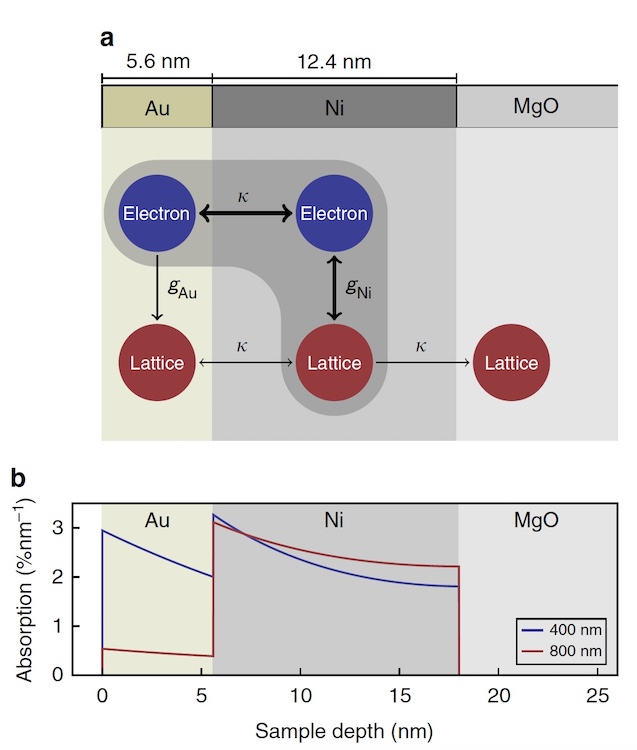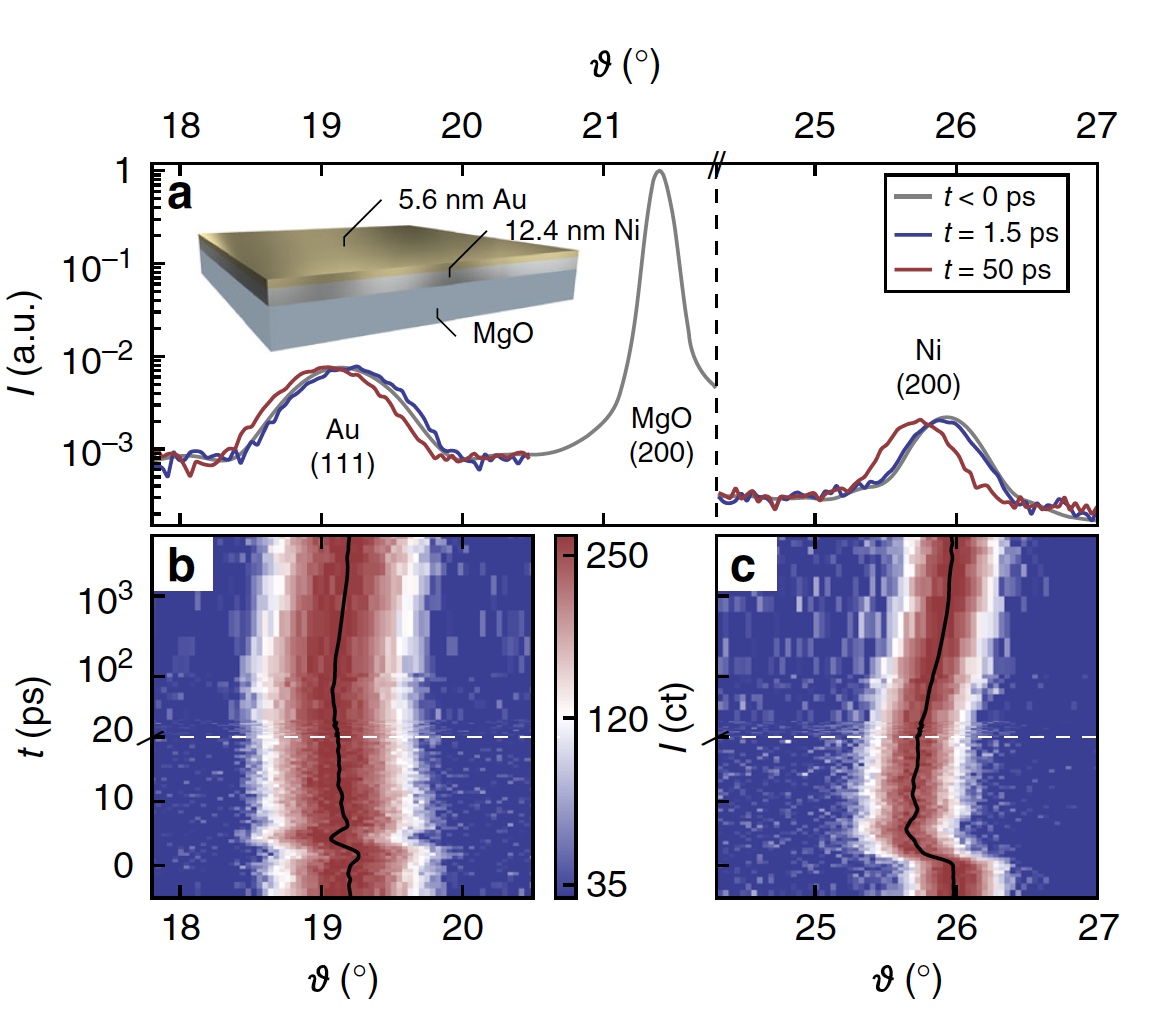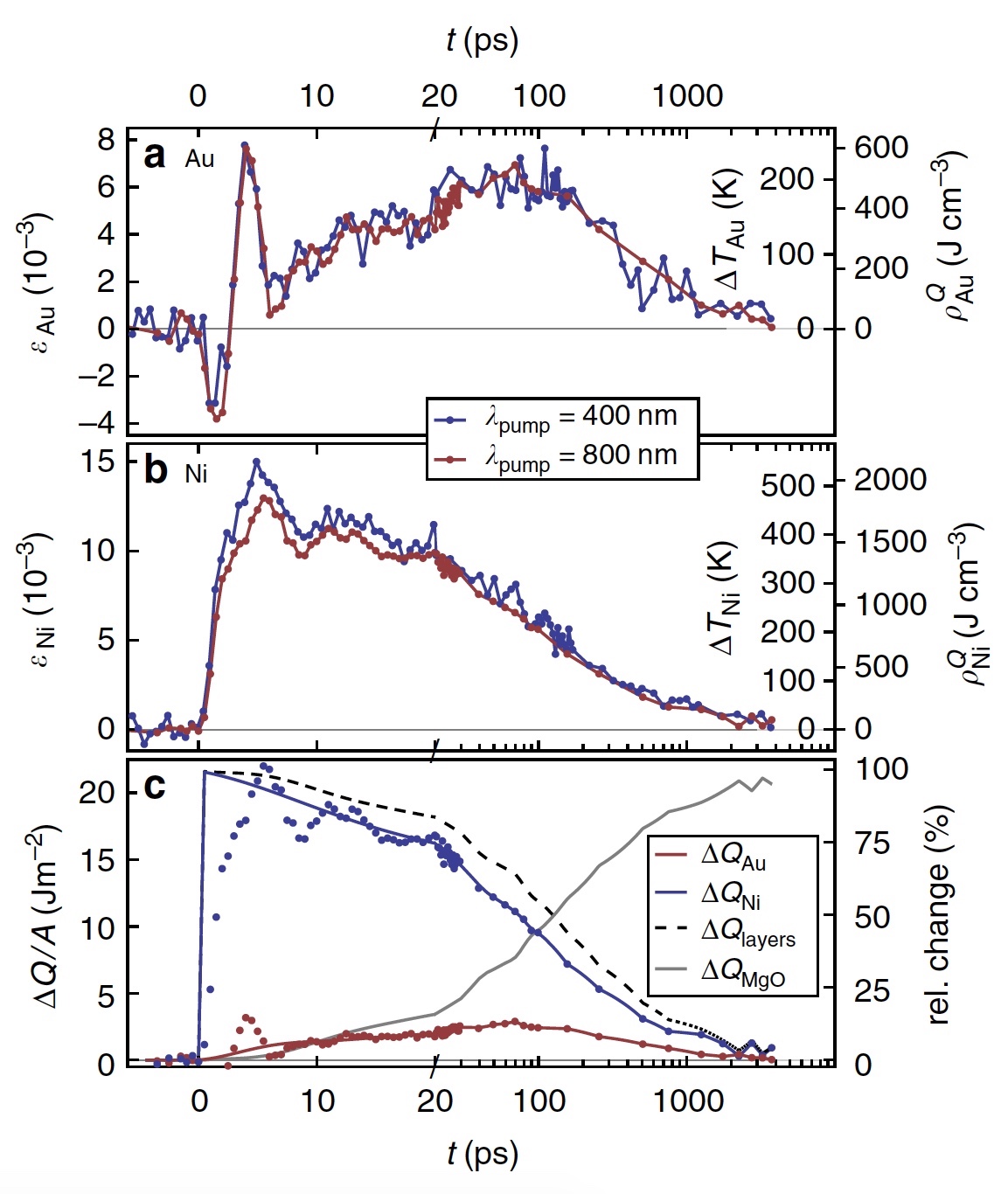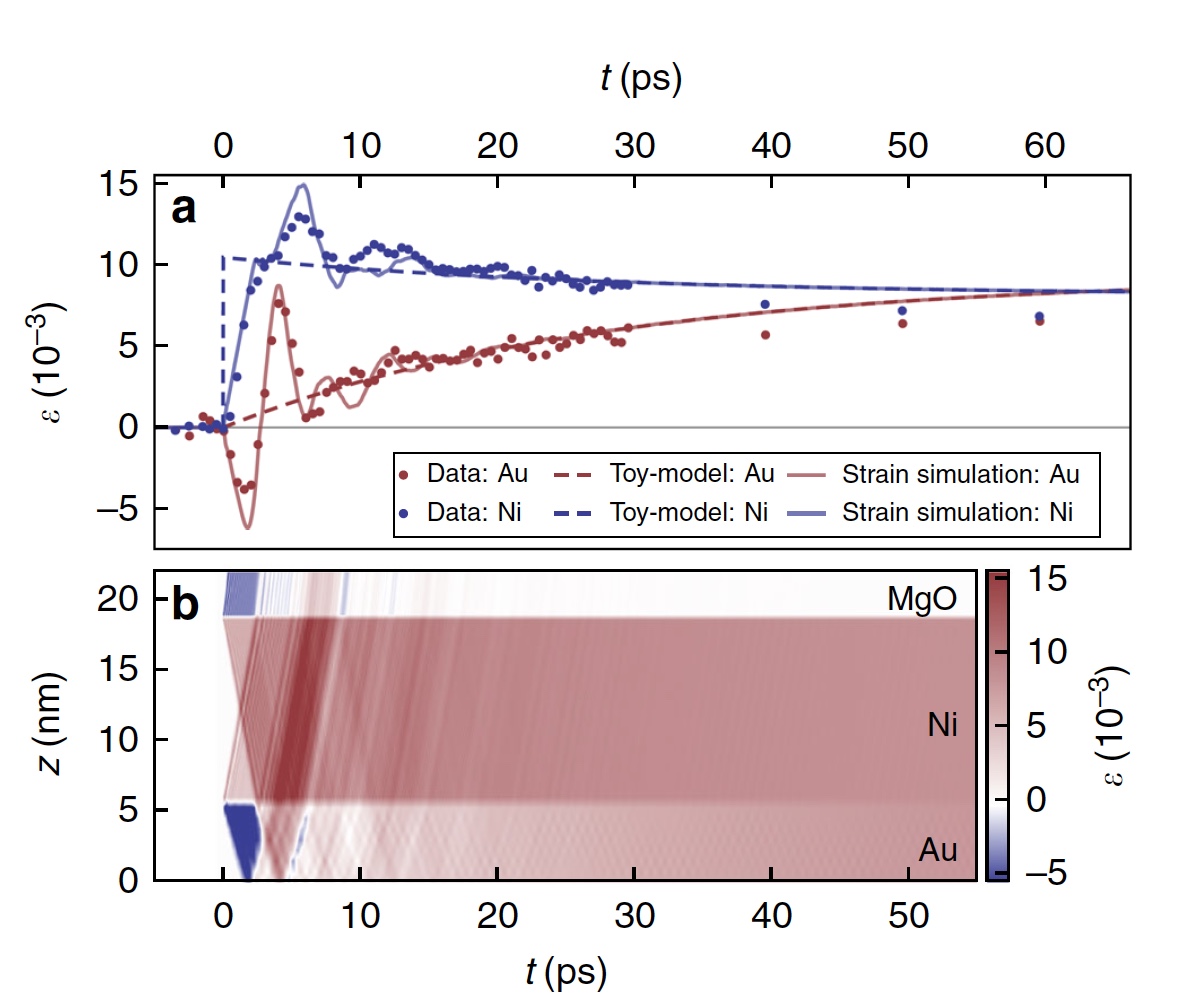Au / Ni / MgO: heat transfer at the nanometer level

Modern scholars, like a hundred or three hundred years ago, are in constant search for something new. Every time a new property of a substance, phenomenon, or process opens, great minds seek a practical use for this. Today’s study is no exception. Every day the amount of data in the world is constantly growing. Therefore, the development of new ways to store information is now on the wave of popularity, just like quantum computers, devices based on microorganisms, etc. As the basis of possible carriers of the future there can be a variety of things, from skyrmions to photons. Today we will look at the study of a physical process so familiar to us as heat exchange, but from a new angle. Ultrafast heat transfer in nanometer multilayer metal structures can serve as the basis for a new technology, scientists say. Why did this particular process provoke such great interest in them, and can their loud statement really be considered prophetic? The report of scientists, in which we now dig, will help us to understand this. Go.
The basis of the study
Ultrafast heating and cooling of thin metal films are fundamental aspects of studying the interaction of photons and electrons, as well as heat transfer at a nanoscale scale.
The interest in temperature and its changes in optically induced femtosecond demagnetization has been great before, in view of the fact that it is looking at multipulse switching. Scientists are also attracted by the energy fluxes in multilayer metals, which are caused by optical excitation, since they play an important role in the process of magnetic recording using temperature changes and in fully optical magnetic switching.
')
However, in the study of such phenomena in such small samples have always been difficult. In order to better understand the essence of heat energy fluxes, it is necessary to gain access to the temperature of the molecular lattice itself, which plays the most important role in heat capacity.
Scientists have realized that ultrafast X-ray diffraction (UXRD) is excellent for conducting specimen-specific Bragg angles * for conducting such complex measurements.
Bragg diffraction * - the phenomenon of strong scattering of waves at certain angles of incidence and a certain wavelength.This method allows you to measure multi-layer structure, even if the layers are located under the opaque covering layer or their thickness is less than the thickness of the surface layer. It is also possible to measure the changes in the lattice of each layer with high accuracy, which allows us to determine the amount of heat released in the layers of metals.
The UXRD method has already been used before, but it had certain limitations. First, the temporal resolution was approximately 100 ps, which made it possible to study the heat transfer for a short time and at a distance less than 100 nm. In this study, it was possible to achieve measurements at a distance of approximately 5 nm.
Sample
A bilayer sample of Au / Ni was used as a test sample, in which the thickness of Au (gold) was 5.6 nm. and Ni (nickel) - 12.4 nm. MgO (magnesium oxide) was used as a substrate, since its reflection coefficient is 1, that is, MgO is an absolute reflector.
Observations on the lattice dynamics of the Au and Ni layers showed that after only 2 ps, the Ni lattice expands. At the same time, the Au lattice remains cold, even if most of the light has been absorbed by the electron subsystem of this layer. The Au lattice heats up rather slowly, reaching a maximum temperature about 80 ps after the optical exposure.
The relaxation process * of a two-layer structure is 2 orders of magnitude slower than 1 picosecond, which is at variance with previous calculations, and slower than the standard time to achieve electron-phonon equilibrium (τ 0 Au = 1–5 ps).
Relaxation * is the process of establishing thermodynamic equilibrium in the system.For scientists, a similar result was a surprise. They explain this by the fact that the unbalanced state between the electrons and the Au lattice remains in the two-layer structure longer than if Au were a single layer of the system. The studies of the Au – Pt two-layer system helped to understand this.
One of the main factors in achieving thermodynamic equilibrium is thermal equilibrium. What this is shown in the video (a bit clumsy, but simply and accurately).
Experiment preparation and results
A femtosecond laser with a wavelength of 400 and 800 nm was used to excite the electronic system Au (upper layer) and Ni.

Image # 1: sample layer structure
It should be noted that with a laser pulse with a long wavelength of 400 nm, the degree of absorption in the layers of Au and Ni is about the same, whereas at 800 nm - the layer of Au practically did not absorb light. Such a strong difference is connected with the fact that at 400 nm the refractive index of the Au layer is significantly higher. At a wavelength of 800 nm in the Au layer (thickness 5.6 nm), the harmful interference of the reflected light reduces the degree of absorption.

Image number 2: experimental data
Image 2a shows an X-ray diffraction pattern that confirms the crystalline orientation of Au and Ni nanolayers. The colored lines show the transitions of the Bragg peaks at selected points in time: 2b for Au and 2c for Ni. The white dashed line is the rupture of the axis from linear to logarithmic time scale.

Image No. 3: Thermodynamics of layers (Ni, Au) and substrates (MgO)
Now it is worth more to consider the process of heat transfer in the experimental sample. As previously mentioned, it is Ni that initially expands, while the Au layer shrinks due to the expansion of the Ni layer. After 3 ps, the Au layer begins to actively expand when the compression wave is converted into an expansion wave due to reflection on the surface. At the same time, there are also slight fluctuations of the deformation wave in the Ni layer.
After a time mark of 80 ps, which is quite long, Au reaches maximum expansion by transferring heat from the Ni layer when the temperatures of the two layers are approximately equalized. Further, at around 100 ps, the cooling process begins, when the heat transfers to the magnesium oxide substrate.
We also managed to determine that after 20 ps from the beginning of the process, the volume of thermal energy transferred from Ni to Au is equal to the amount of energy transferred to the substrate.
Already after 150 ps, half of the thermal energy of the two-layer film passes into the substrate. However, scientists still do not understand why the ultra-thin Au layer does not heat up much faster due to electron heat exchange, which is quite common for metals. And the “leakage” of heat into the substrate does not give exhaustive explanations.
Based on recent studies of the reflection coefficient of thermal radiation, scientists have created an improved two-temperature model that will help explain the slow heating of Au ( Figure 3a ).

Two-temperature model
And now in order. Electronic systems Ni and Au very quickly reach an equilibrium state due to high electrical conductivity. A confirmation of the rapid equilibration is the fact that in the first 2 ps the Au layer is equally compressed at 400 nm and at 800 nm. If it were otherwise, then high electron pressure in Au after exposure to a 400 nm beam would lead to compression caused by Ni expansion.
Another proof of equilibrium is the following statement by the researchers: if the electrons did not reach equilibrium in less than 1 ps and thus did not remove heat from the electronic system Au, such a strong compression of Au would not be observed, since the electronic pressure would immediately lead to the expansion of Au .
Regarding the electron-photon interaction constant, in the Ni layer it is much larger than in Au. Virtually all photon energy obtained by the electron system is sent to the Ni lattice. And this is despite the fact that at 400 nm about 1/3 of the absorbed energy was initially introduced into the Au electronic system.

Image number 4: comparison of the model with experimental data
Graph 4a shows the deformation (dashed lines), calculated from the average heating of the layers. These calculations correspond to the model shown in image 1b. But the solid lines are simulations that are based on the model described above.
4b is the color representation of the deformation depending on the depth of the sample and the time, taking into account the presence of a spatially uniform transient thermal stress in the layers. This graph corresponds to the dotted lines in graph 4a.
The report of scientists describes more details of their research, as well as methods of calculation, therefore I strongly recommend that you read it.
Epilogue
This study made it possible to study the heat exchange processes in the multilayer structure at the nanometer level, which opens up the possibility in more detail to characterize certain properties of complex systems of alloys and combinations of metals.
The electrons Au and Ni showed the ability to very quickly enter a state of equilibrium, which is confirmed by the fact that when exposed to a beam of 400 nm and 800 nm, heating initially occurs only in Ni, regardless of the energy absorbed by the Au layer.
At 400 nm, the process of transfer of thermal energy between the layers (from one layer to another and vice versa) was detected. At first, electrons quickly transfer energy from Au to Ni, so part of the heat is transferred back from Ni photons to Au photons. Finally, heat passes through Ni to a magnesium oxide substrate.
Due to the weak electron-photon coupling in Au, the energy transferred from Ni photons through Ni and Au electrons to Au lattice is strongly suppressed. This study will definitely have a strong effect on the future study of super-diffusion electron exchange and optical demagnetization / magnetization reversal.
Such work can and will become an important element in improving certain aspects of future technologies. These are only the first steps, but the potential is obvious. If you are not skeptical of such research and want to understand what others consider unimportant, progress will move much faster and more efficiently.
Thank you for staying with us. Do you like our articles? Want to see more interesting materials? Support us by placing an order or recommending to friends, 30% discount for Habr users on a unique analogue of the entry-level servers that we invented for you: The whole truth about VPS (KVM) E5-2650 v4 (6 Cores) 10GB DDR4 240GB SSD 1Gbps from $ 20 or how to share the server? (Options are available with RAID1 and RAID10, up to 24 cores and up to 40GB DDR4).
3 months for free if you pay for new Dell R630 for half a year - 2 x Intel Deca-Core Xeon E5-2630 v4 / 128GB DDR4 / 4x1TB HDD or 2x240GB SSD / 1Gbps 10 TB - from $ 99.33 a month , only until the end of August, order can be here .
Dell R730xd 2 times cheaper? Only we have 2 x Intel Dodeca-Core Xeon E5-2650v4 128GB DDR4 6x480GB SSD 1Gbps 100 TV from $ 249 in the Netherlands and the USA! Read about How to build an infrastructure building. class c using servers Dell R730xd E5-2650 v4 worth 9000 euros for a penny?
Source: https://habr.com/ru/post/421135/
All Articles